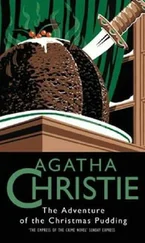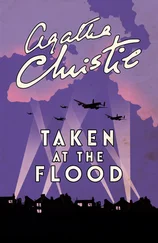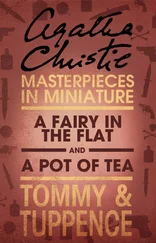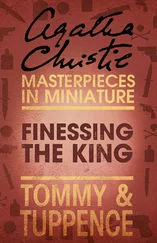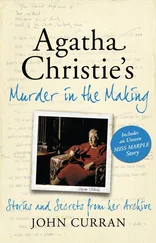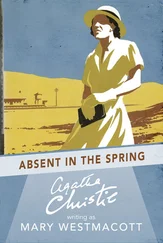Agatha Christie - One, Two, Buckle My Shoe
Здесь есть возможность читать онлайн «Agatha Christie - One, Two, Buckle My Shoe» весь текст электронной книги совершенно бесплатно (целиком полную версию без сокращений). В некоторых случаях можно слушать аудио, скачать через торрент в формате fb2 и присутствует краткое содержание. Жанр: Классический детектив, на английском языке. Описание произведения, (предисловие) а так же отзывы посетителей доступны на портале библиотеки ЛибКат.
- Название:One, Two, Buckle My Shoe
- Автор:
- Жанр:
- Год:неизвестен
- ISBN:нет данных
- Рейтинг книги:3 / 5. Голосов: 1
-
Избранное:Добавить в избранное
- Отзывы:
-
Ваша оценка:
- 60
- 1
- 2
- 3
- 4
- 5
One, Two, Buckle My Shoe: краткое содержание, описание и аннотация
Предлагаем к чтению аннотацию, описание, краткое содержание или предисловие (зависит от того, что написал сам автор книги «One, Two, Buckle My Shoe»). Если вы не нашли необходимую информацию о книге — напишите в комментариях, мы постараемся отыскать её.
One, Two, Buckle My Shoe — читать онлайн бесплатно полную книгу (весь текст) целиком
Ниже представлен текст книги, разбитый по страницам. Система сохранения места последней прочитанной страницы, позволяет с удобством читать онлайн бесплатно книгу «One, Two, Buckle My Shoe», без необходимости каждый раз заново искать на чём Вы остановились. Поставьте закладку, и сможете в любой момент перейти на страницу, на которой закончили чтение.
Интервал:
Закладка:
"Perhaps that was the explanation?"
"But, no, it was not. My eyes do not deceive me! To continue, I studied the dead body of this woman and I did not like what I saw. Why had the face been wantonly, deliberately smashed and rendered unrecognizable?"
Alistair Blunt moved restlessly. He said:
"Must we go over that again? We know -"
Hercule Poirot said firmly:
"It is necessary. I have to take you over the steps that led me at last to the truth. I said to myself: 'Something is wrong here. Here is a dead woman in the clothes of Miss Sainsbury Seale (except, perhaps, the shoes?) and with the handbag of Miss Sainsbury Seale – but why is her face unrecognizable? Is it, Perhaps, because the face is not the face of Miss Sainsbury Seale?' And immediately I begin to put together what I have heard of the appearance of the other woman – the woman to whom the flat belongs, and I ask myself – might it not, perhaps be this other woman who lies dead here? I go then and look at the other woman's bedroom. I try to picture to myself what sort of woman she is. In superficial appearance, very different to the other. Smart, showily dressed, very much made up. But in essentials, not unlike. Hair, build, age… But there is one difference. Mrs. Albert Chapman took a five in shoes. Miss Sainsbury Seale, I knew, took a size ten stocking – that is to say she would take at least a six in shoes. Mrs. Chapman, then, had smaller feet than Miss Sainsbury Seale. I went back to the body. If my half-formed ideas were right, and the body was that of Mrs. Chapman wearing Miss Sainsbury Seale's clothes, then the shoes should be too big. I took hold of one. But it was not loose. It fitted tightly. That looked as though it were the body of Miss Sainsbury Seale after all! But in that case, why was the face disfigured? Her identity was already proved by the handbag, which could easily have been removed, but which had not been removed.
"It was a puzzle – a tangle. In desperation I seized on Mrs. Chapman's address book – a dentist was the only person who could prove definitely who the dead woman was – or was not. By a coincidence, Mrs. Chapman's dentist was Mr. Morley. Morley was dead, but identification was still possible. You know the result. The body was identified in the coroner's court by' Mr. Morley's successor as that of Mrs. Albert Chapman."
Blunt was fidgeting with some impatience, but Poirot took no notice. He went on:
"I was left now with a psychological problem. What sort of a woman was Mabelle Sainsbury Seale? There were two answers to that question. The first was the obvious one borne out by her whole life in India and by the testimony of her personal friends. That depicted her as an earnest, conscientious, slightly stupid woman. Was there another Miss Sainsbury Seale? Apparently there was. There was a woman who had lunched with a well-known foreign agent, who had accosted you in the street and claimed to be a close friend of your wife's (a statement that was almost certainly untrue), a woman who had left a man's house very shortly before a murder had been committed, a woman who had visited another woman on the evening when in all probability that other woman had been murdered, and who had since disappeared, although she must be aware that the police force of England was looking for her. Were all these actions compatible with the character which her friends gave her? It would seem that they were not. Therefore, if Miss Sainsbury Seale were not the good, amiable creature she seemed, then it would appear that she was quite possibly a cold-blooded murderess, or almost certainly an accomplice after the fact.
"I had one more criterion – my own personal impression. I had talked to Mabelle Sainsbury Seale myself. How had she struck me? And that, Mr. Blunt, was the most difficult question to answer of all. Everything that she said, her way of talking, her manner, her gestures, all were perfectly in accord with her given character. But they were equally in accord with a clever actress playing a part. And, after all, Mabelle Sainsbury Seale had started life as an actress.
"I had been much impressed by a conversation I had had with Mr. Barnes of Ealing who had also been a patient at 58 Queen Charlotte Street on that particular day. His theory, expressed very forcibly, was that the deaths of Morley and of Amberiotis were only incidental, so to speak – that the intended victim was you."
Alistair Blunt said:
"Oh, come now – that's a bit farfetched."
"Is it, Mr. Blunt? Is it not true that at this moment there are various groups of people to whom it is vital that you should be – removed, shall we say? Shall be no longer capable of exerting your influence?"
Blunt said:
"Oh, yes, that's true enough. But why mix up this business of Morley's death with that?"
Poirot said:
"Because there is a certain – how shall I put it? – lavishness about the case – expense is no object – human life is no object. Yes, there is a recklessness, a lavishness – that points to a big crime!"
"You don't think Morley shot himself because of a mistake?"
"I never thought so – not for a minute. No, Morley was murdered, Amberiotis was murdered, an unrecognizable woman was murdered – Why? For some big stake. Barnes' theory was that somebody had tried to bribe Morley or his partner to put you out of the way."
Alistair Blunt said sharply:
"Nonsense!"
"Ah, but is it nonsense? Say one wishes to put someone out of the way. Yes, but that someone is forewarned, forearmed, difficult of access. To kill that person it is necessary to be able to approach him without awakening his suspicions – and where would a man be less suspicious than in a dentist's chair?"
"Well, that's true, I suppose. I never thought of it like that."
"It is true. And once I realized it I had my first vague glimmering of the truth."
"So you accepted Barnes' theory? Who is Barnes, by the way?"
"Barnes was Reilly's twelve o'clock patient. He is retired from the Home Office and lives at Ealing. An insignificant little man. But you are wrong when you say I accepted his theory. I did not. I only accepted the principle of it."
"What do you mean?"
Hercule Poirot said:
"All along, all the way through, I have been led astray – sometimes unwittingly, sometimes deliberately and for a purpose. All along it was presented to me, forced upon me, that this was what you might call a public crime. That is to say, that you, Mr. Blunt, were the focus of it all, in your public character. You, the banker, you, the controller of finance, you, the upholder of conservative tradition!
"But every public character has a private life also. That was my mistake, I forgot the private life. There existed private reasons for killing Morley – Frank Carter's, for instance.
"There could also exist private reasons for killing you… You had relations who would inherit money when you died. You had people who loved and hated you – as a man – not as a public figure.
"And so I came to the supreme instance of what I call 'the forced card.' The purported attack upon you by Frank Carter. If that attack was genuine – then it was a political crime. But was there any other explanation? There could be. There was a second man in the shrubbery. The man who rushed up and seized Carter. A man who could easily have fired that shot and then tossed the pistol to Carter's feet so that the latter would almost inevitably pick it up and be found with it in his hand…
"I considered the problem of Howard Raikes. Raikes had been at Queen Charlotte Street that morning of Morley's death. Raikes was a bitter enemy of all that you stood for and were. Yes, but Raikes was something more. Raikes was the man who might marry your niece, and with you dead, your niece would inherit a very handsome income, even though you had prudently arranged that she could not touch the principal.
Читать дальшеИнтервал:
Закладка:
Похожие книги на «One, Two, Buckle My Shoe»
Представляем Вашему вниманию похожие книги на «One, Two, Buckle My Shoe» списком для выбора. Мы отобрали схожую по названию и смыслу литературу в надежде предоставить читателям больше вариантов отыскать новые, интересные, ещё непрочитанные произведения.
Обсуждение, отзывы о книге «One, Two, Buckle My Shoe» и просто собственные мнения читателей. Оставьте ваши комментарии, напишите, что Вы думаете о произведении, его смысле или главных героях. Укажите что конкретно понравилось, а что нет, и почему Вы так считаете.

